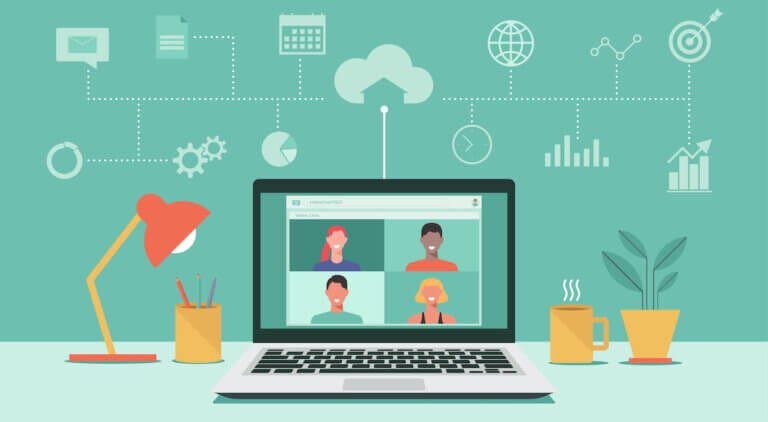A healthy home workstation
Many of us are working from home like we may never have done before. Our world has changed; some changes will be temporary and some might become permanent. But regardless of it being permanent or temporary, you may need some tips for creating a healthy home workspace.
Whether it is a spare room “office” or the kitchen table, you need to consider that the way the space is set-up may hurt you. Ergonomics is the study of how people who primarily sit to perform their work get work-related back strain or injuries. There are things that you can do — some very simple — to help you prevent muscle pain and strain due to your sitting workspace.
Position your laptop
The first thing to consider if you are uncomfortable is to change your body positioning. Many of us will use a laptop computer while at home. It’s an incredibly versatile piece of equipment, but can create a few muscle problems.
If you are using a laptop, here are a few tips to make sure your neck and back aren’t getting the raw end of the deal.
- Your laptop screen should be approximately at arm’s length away from you.
- If you do not wear glasses or wear single vision glasses, the top of the screen should be at about eye level. So that means your laptop needs to be on a box or stack of books, and you need to get a remote keyboard and mouse.
- If you wear bifocals or progressive glasses, you need to elevate the laptop much less to the “sweet spot” where you can read the screen without pointing your nose up in the air. That may mean leaving the laptop on the table surface. But the remote mouse is still a good idea because the touchpad puts your wrist at an awkward angle. The remote keyboard is a good idea if you have a small laptop where the keys may be too close together for your comfort.

Related Articles
Use a desk, not the coffee table
If you can avoid it, DO NOT use your laptop on the coffee table; your neck and back will suffer. Every degree you hold your head from centre, puts ten pounds of pressure on your spine. And since you tend to lean on the elbows, eventually you will feel some strain in your shoulders or trapezoids (the muscles above your shoulder blades).
Check your chair
You probably do not have an adjustable chair or work surface, so let’s make the best of what you have.
- When you are sitting at your chair, are your feet flat on the floor? If not, put those old textbooks to work and support your feet so they are flat and your knees and hips are bent to about 90 to 110 degrees.
- If your chair does not have lumbar support, use a small pillow or rolled towel to support your lumbar (the curve in your lower back).
- It would be ideal if the table surface was just below the height of your resting elbows, but it’s probably higher. If you are leaning on your elbows or forearms all day, you will feel a strain in your trapezoids. Do your best not to lean; it can be a hard habit to break, but will save you the pain in your neck.
- Leaning on your forearms can cut circulation to your wrists, which can cause wrist pain. Another problem may be a sharp edge of the table. Pad the edge to reduce the possibility of cutting off circulation in your arms and wrist.
Take breaks
Take frequent breaks — about once every hour — and move around, go for a walk or do some yoga. Don’t forget to drink water (lots of water) and try to stay away from the fridge!







